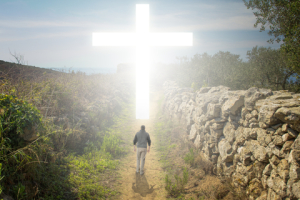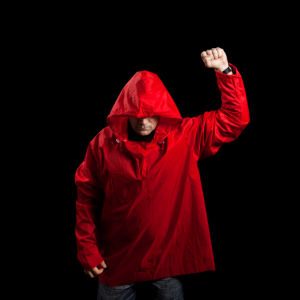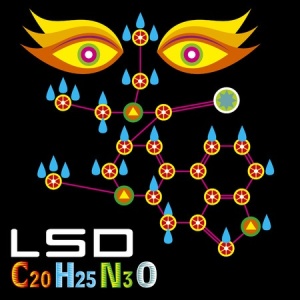Look Before You Speak
I am concerned about an article I read recently on alcohol treatment, “The Best Treatment for Alcohol Use Disorder Your Addiction Counselor Isn’t Telling You.” It seemed like it was more of a rant than an attempt to constructively make a point. The author is an epidemiologist who wanted people to know that “medication is a vital key” in treating addiction. But some of the comments he made were surprisingly biased for someone who is “a published healthcare statistician and epidemiologist currently pursuing a doctorate in epidemiology.”
One example of this is a study from the Journal of Alcohol Studies that he linked in his article. He cherry picked how the study found that 29% of a sample of A.A. members said they received some pressure to go off their medication (of any type). But he failed to report that over half of the A.A. sample believed that using relapse-preventing medications “either was a good idea or might be a good idea.” Seventeen percent didn’t think that it was a good idea to take relapse-preventing medications; and only 12% said they would tell another member to stop taking it. Sixty-nine percent of these didn’t listen and continued taking their medication. The conclusions from the article’s abstract were:
The study did not find strong, widespread negative attitudes toward medication for preventing relapse among AA members. Nevertheless, some discouragement of medication use does occur in AA. Though most AA members apparently resist pressure to stop a medication, when medication is prescribed a need exists to integrate it within the philosophy of 12-step treatment programs.
He described the benefits of two medications for treating alcohol use disorder, Naltrexone and Campral (acamprosate) and claimed that: “ These medications are very likely the ones that your counselor or sponsor is not telling you about. In fact, the majority of the rehabs in the United States do not use any of this medication.” The author made, but did not support that claim.
The rehab I work for part time knows of and supports the use of both of these medications and has done so for a number of years. A.A. sponsors might be violating their Traditions in recommending or telling people they sponsor that they should try Naltrexone or Campral. They certainly would be involved in ethically questionable advice-giving since their sponsor role is not as a doctor or an addictions professional.
The most disturbing claim was that “Naltrexone is an opioid inhibitor that has been FDA approved as a constant low dose (daily intake) or as a supplement prior to drinking.” He noted its use to inhibit cravings for chronic alcoholics, cautioning that it could “up-regulate” the opioid system and cause worse relapses when the person was off Naltrexone. Then he suggested that it was best served as an “emergency relapse drug.” From the article:
Patients, prior to relapse, have taken this drug and report significantly lower impact of their relapse. In fact, naltrexone works so well to reduce relapse that many alcoholics use it to successfully drink on a regular basis with very few reports of high binge drinking. It is entirely possible that rather than going to AA meetings, the majority of alcoholics in the near future can simply carry a bottle of naltrexone with them for drinking occasions.
I’ve reviewed information on Naltrexone from Medline Plus, WebMD, Drugs.com, and SAMHSA (Substance Abuse and Mental Health Services Administration) here and here. I did not find ANY indication that Naltrexone was “FDA approved” as a supplement prior to drinking. To be sure, Naltrexone is an FDA-approved medication for alcohol dependence. But there was no indication that Naltrexone was approved as a “supplement prior to drinking” or as an “emergency relapse drug” that “many alcoholics use it to successfully drink on a regular basis with very few reports of high binge drinking.”
There have been studies that indicated Naltrexone led to reduced drinking in both the amounts of alcohol and the frequency of drinking. And there have been studies where individuals used Naltrexone to limit or control their drinking, as with pharmacological extinction in the Sinclair Method. Here is an article written by John Sinclair, after whom the method was named. There is also information on the Sinclair Method here and on Facebook. Also see my article, “A ‘Cure’ for Alcoholism.” But Naltrexone is not FDA approved to limit, control or extinguish alcohol use at this time.
To make the claim as the author does—“It is entirely possible that rather than going to AA meetings, the majority of alcoholics in the near future can simply carry a bottle of naltrexone with them for drinking occasions”—is foolhardy, irresponsible, and dangerous. Also, it is a wrong interpretation of the state of current research into the use of Naltrexone with alcohol use disorders.
The most positive statement I found about Naltrexone in that regard on the above noted websites was in one of the SAMSHA publications, “Incorporating Alcohol Pharmacotherapies Into Medical Practice.” What follows is that statement:
Naltrexone appears to be effective for attenuating craving in people who are alcohol dependent (Monti et al., 1999, 2001). By blocking craving, naltrexone may enhance the ability of patients to abstain from drinking. By blocking the pleasure from alcohol, naltrexone also may reduce the amount of heavy drinking in those who do drink.
If he wrote the article as a rhetorical device to help people see how medications can be helpful when treating alcoholism, okay. He accomplished that goal. It had generated 1276 comments as of 10/25/2014 when I last looked. But if he was attempting to give credible information as an epidemiologist on pharmacological treatments for alcohol use disorder, he did not succeed.









